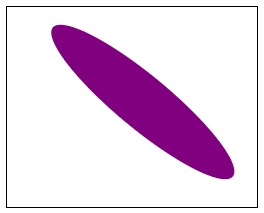
- HTML Canvas - Home
- HTML Canvas - Introduction
- Environmental Setup
- HTML Canvas - First Application
- HTML Canvas - Drawing 2D Shapes
- HTML Canvas - Path Elements
- 2D Shapes Using Path Elements
- HTML Canvas - Colors
- HTML Canvas - Adding Styles
- HTML Canvas - Adding Text
- HTML Canvas - Adding Images
- HTML Canvas - Canvas Clock
- HTML Canvas - Transformations
- Composting and Clipping
- HTML Canvas - Basic Animations
- Advanced Animations
- HTML Canvas API Functions
- HTML Canvas - Element
- HTML Canvas - Rectangles
- HTML Canvas - Lines
- HTML Canvas - Paths
- HTML Canvas - Text
- HTML Canvas - Colors and Styles
- HTML Canvas - Images
- HTML Canvas - Shadows and Transformations
- HTML Canvas Useful Resources
- HTML Canvas - Quick Guide
- HTML Canvas - Useful Resources
- HTML Canvas - Discussion
HTML Canvas - setTransform() Method
The HTML Canvas setTransform() method of Canvas 2D API resets the current transformation matrix if applied to the identity matrix and then invokes a new transformation as given by the arguments of this method.
Syntax
Following is the syntax of HTML Canvas setTransform() method −
CanvasRenderingContext2D.setTransform(matrix, a, b, c, d, e, f);
Parameters
Following is the list of parameters of this method −
| S.No | Parameter & Description |
|---|---|
| 1 |
matrix
This is a newer type of parameter which can be passed to the object. It represents a 2D transformation to set. The matrix is assigned as follows − $\begin{Bmatrix} a& c& e \\ b& d& f\\ 0& 0& 1\\ \end{Bmatrix}$ |
| 2 |
a Horizontal scaling. |
| 3 |
b Vertical skewing |
| 4 |
c Horizantal skewing |
| 5 |
d Vertical scaling |
| 6 |
e Horizantal translation |
| 7 |
f Vertical translation |
Return Value
A new transform applied to the context object of CanvasRenderingContext2D interface is drawn on the Canvas element.
Example 1
The following example applies the HTML Canvas setTransform() method to a rectangle and draws it onto the Canvas element.
<!DOCTYPE html>
<html lang="en">
<head>
<title>Reference API</title>
<style>
body {
margin: 10px;
padding: 10px;
}
</style>
</head>
<body>
<canvas id="canvas" width="250" height="200" style="border: 1px solid black;"></canvas>
<script>
var canvas=document.getElementById('canvas');
var context=canvas.getContext('2d');
context.fillStyle='purple';
context.setTransform(1, 0.5, 0.7, 0.9, 0.8, 0);
context.fillRect(15, 15, 100, 60);
</script>
</body>
</html>
Output
The output returned by the above code on the webpage as −

Example 2
The following example applies transformation matrix to circle drawn inside the Canvas element using the method setTransform().
<!DOCTYPE html>
<html lang="en">
<head>
<title>Reference API</title>
<style>
body {
margin: 10px;
padding: 10px;
}
</style>
</head>
<body>
<canvas id="canvas" width="250" height="200" style="border: 1px solid black;"></canvas>
<script>
var canvas = document.getElementById('canvas');
var context = canvas.getContext('2d');
context.fillStyle = 'purple';
context.setTransform(1, 0.5, 0.7, 0.9, 0.8, 0);
context.arc(100, 50, 75, 0, 2 * Math.PI);
context.fill();
</script>
</body>
</html>
Output
The output returned by the above code on the webpage as −
